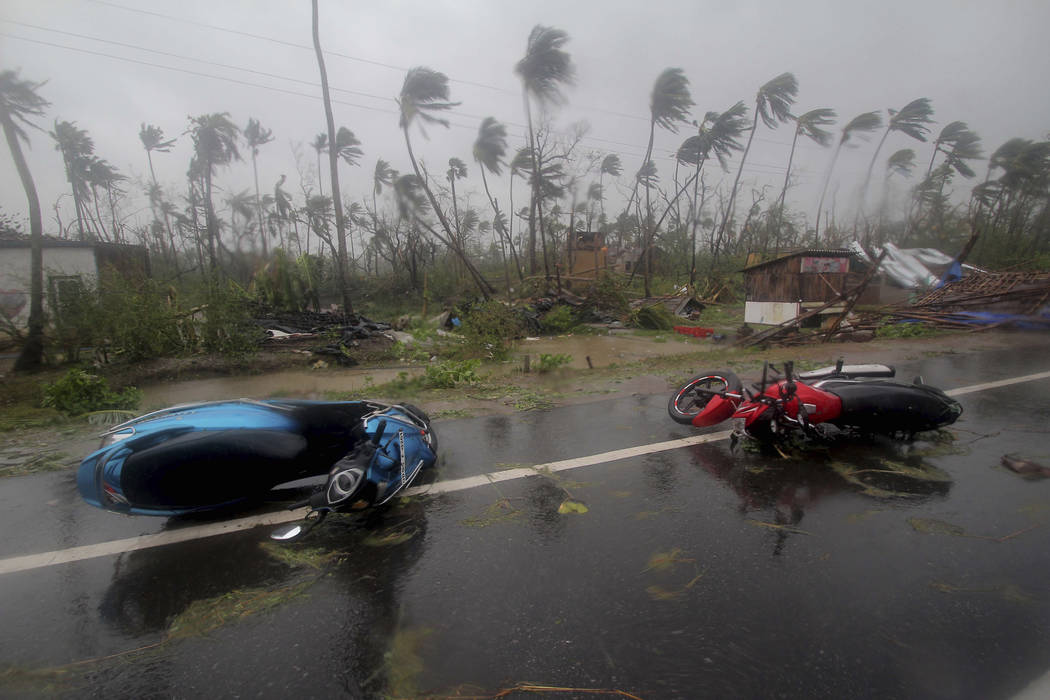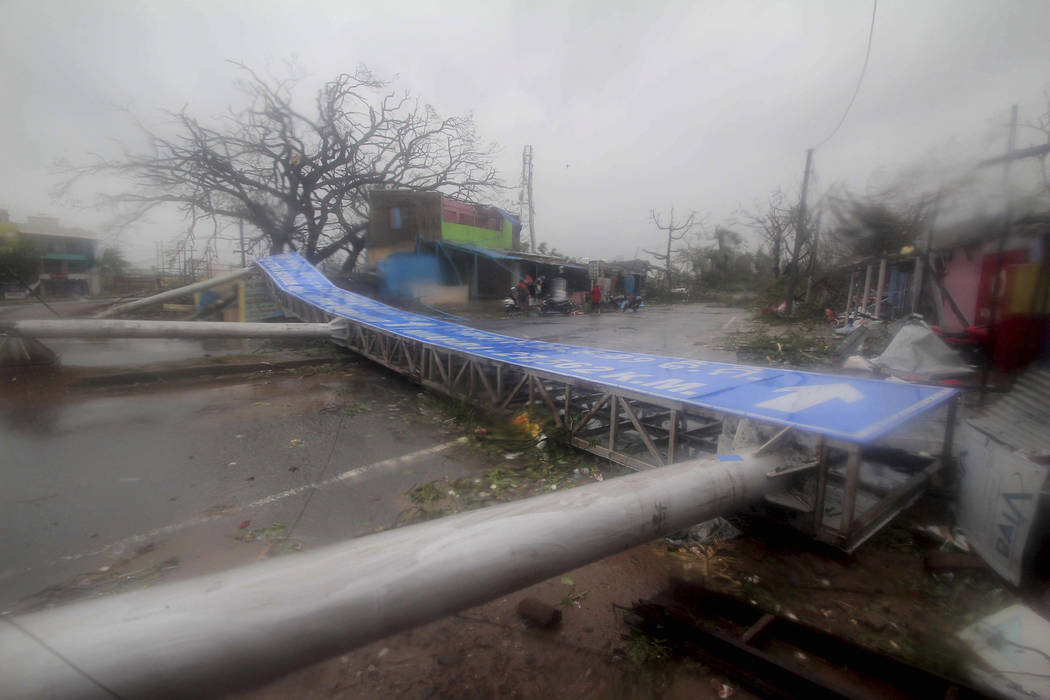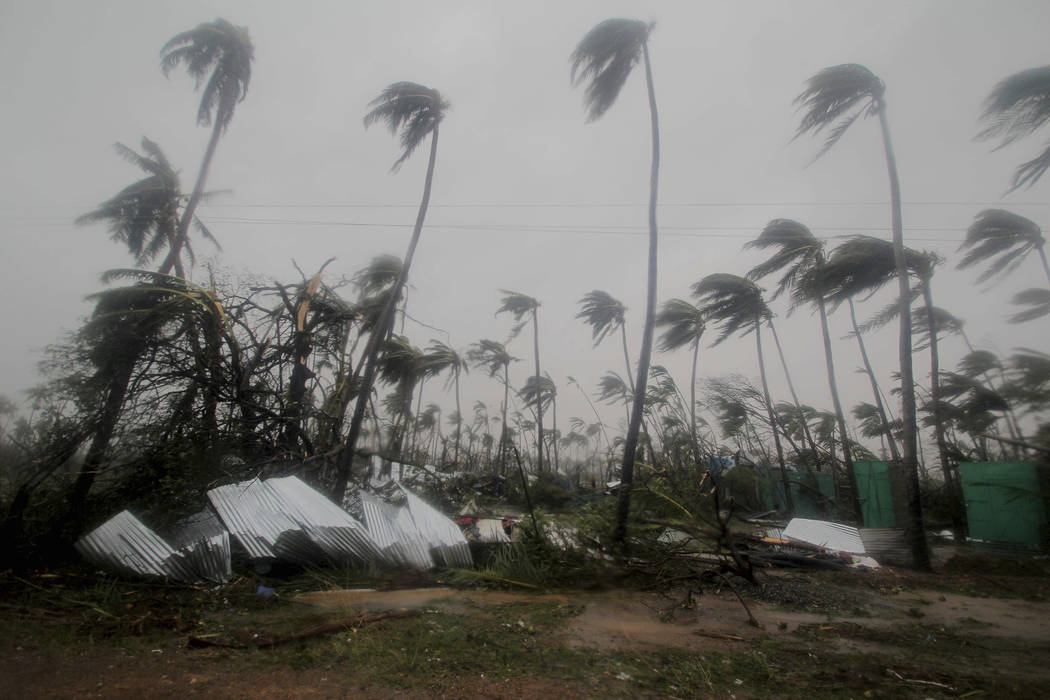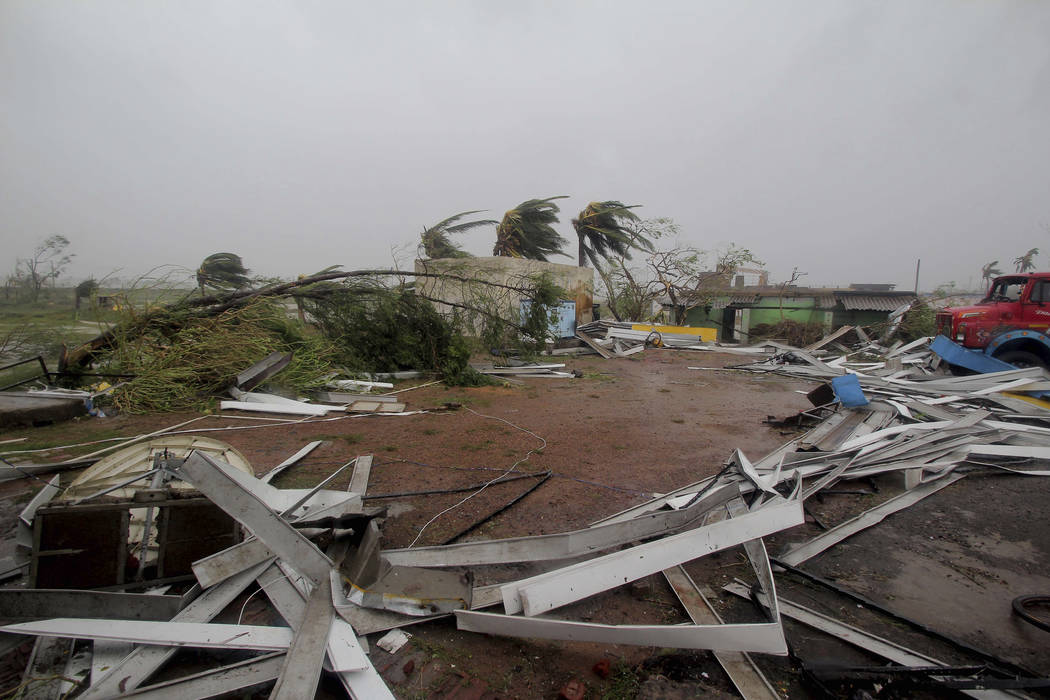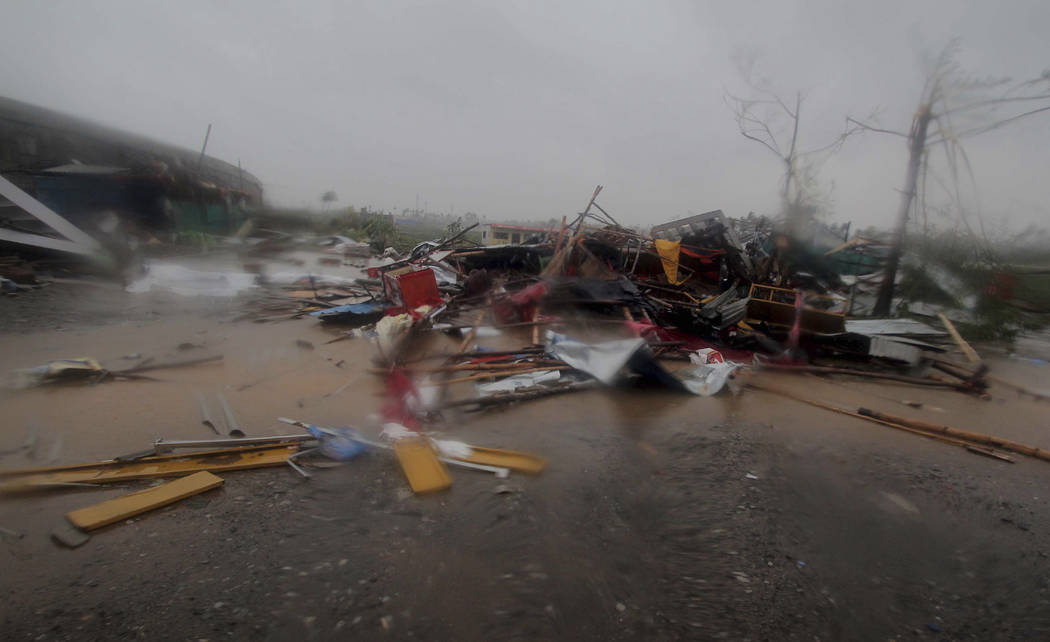1.2M forced from homes as cyclone lashes India
KOLKATA, India — Cyclone Fani tore through India’s eastern coast on Friday as a grade 5 storm, lashing beaches with rain and winds gusting up to 127 miles per hour and affecting weather as far away as Mount Everest as it approached the former imperial capital of Kolkata.
The India Meteorological Department said the “extremely severe” cyclone in the Bay of Bengal hit the coastal state of Odisha around 8 a.m., with weather impacted across the Asian subcontinent.
Dust storms were forecast in the desert state of Rajasthan bordering Pakistan, heat waves in the coastal state of Maharashtra on the Arabian Sea, heavy rain in the northeastern states bordering China and snowfall in the Himalayas.
Around 1.2 million people were evacuated from low-lying areas of Odisha and moved to nearly 4,000 shelters, according to India’s National Disaster Response Force. Indian officials put the navy, air force, army and coast guard on high alert. Odisha Special Relief Commissioner Bishnupada Sethi said the evacuation effort was unprecedented in India.
Storm weakens
By Friday afternoon, Fani had weakened to a “very severe” storm as it hovered over coastal Odisha and was forecast to move north-northeast toward the Indian state of West Bengal by Friday evening.
In Bhubaneswar, a city in Odisha famous for an 11th-century Hindu temple, palm trees whipped back and forth like mops across skies made opaque by gusts of rain.
It is a “very, very scary feeling,” said Tanmay Das, a 40-year-old resident, who described “the sound of wind as if it will blow you away.”
Most of the area’s thatched-roof houses were destroyed, and there was no electricity.
The national highway to Puri, a popular tourist beach city with other significant Hindu antiquities, was littered with fallen trees and electricity poles and a blue highway sign, making it impassable. A special train ran Thursday to evacuate tourists from the city.
The airport in Kolkata, the capital of West Bengal, closed from 3 p.m. Friday to Saturday morning, and rail lines were closed.
Trains canceled
At least 200 trains were canceled across India.
The storm hit in the middle of India’s six-week general election, with rain forecast in Kolkata forcing political parties to cancel campaign events.
The National Disaster Response Force dispatched 54 rescue and relief teams of doctors, engineers and deep-sea divers to flood-prone areas along the coast and as far afield as Andaman and Nicobar Islands, a group of islands that comprise a union territory about 840 miles east of mainland India in the Bay of Bengal.
Up to four inches of rain were expected in much of Sri Lanka, the island nation off the eastern tip of India.
Felt at Mount Everest
More than 1,430 miles away on Mount Everest, some mountaineers and Sherpa guides were descending to lower camps as weather worsened at higher elevations. The government issued a warning that heavy snowfall was expected in the higher mountain areas with rain and storms lower down, and asked trekking agencies to take tourists to safety.
Hundreds of climbers, their guides, cooks and porters huddled at the Everest base camp, according to Pemba Sherpa of Xtreme Climbers Trek, who said weather and visibility was poor. May is the best month to climb the 8,850-foot (29,035-foot) Everest when Nepal experiences a few windows of good weather to scale the peak.
“It is still the beginning of the month, so there is no reason for climbers to worry” that weather from the cyclone will cost them their chance to reach the summit, Sherpa said.
On India’s cyclone scale, Fani is the second-most severe, equivalent to a Category 3 hurricane.
Its timing is unusual, according to data from the Meteorological Department. Most extremely severe cyclones hit India’s east coast in the post-monsoon season. Over roughly half a century, 23, or nearly 60% of the cyclones, to hit India were observed between October and December.
Because Fani spent 10 days gathering strength over the sea, it delivered a huge blow when it made landfall.
Some of the deadliest tropical cyclones on record have occurred in the Bay of Bengal. A 1999 “super” cyclone killed around 10,000 people and devastated large parts of Odisha. Due to improved forecasts and better coordinated disaster management, the death toll from Cyclone Phailin, an equally intense storm that hit in 2013, was less than 50, according to the World Meteorological Organization.
The 1999 super cyclone reached wind speeds of 161-173 mph, said India Meteorological Department scientist Mrutyunjay Mohapatra.
“This is not as bad,” he said.
“Apart from these winds which may cause damage in terms of uprooting small trees in West Bengal and some big trees in Odisha and extensive damage to thatched houses and mud houses … (and) disruption of power and telecommunication lines,” Mohapatra said, “it can also impact the rail and road traffic and also air traffic for some time.”
———
Schmall reported from New Delhi. Associated Press writers Omer Farooq in Hyderabad, India, Julhas Alam in Dhaka, Bangladesh, and Binaj Gurubacharya in Kathmandu, Nepal, contributed to this report.



